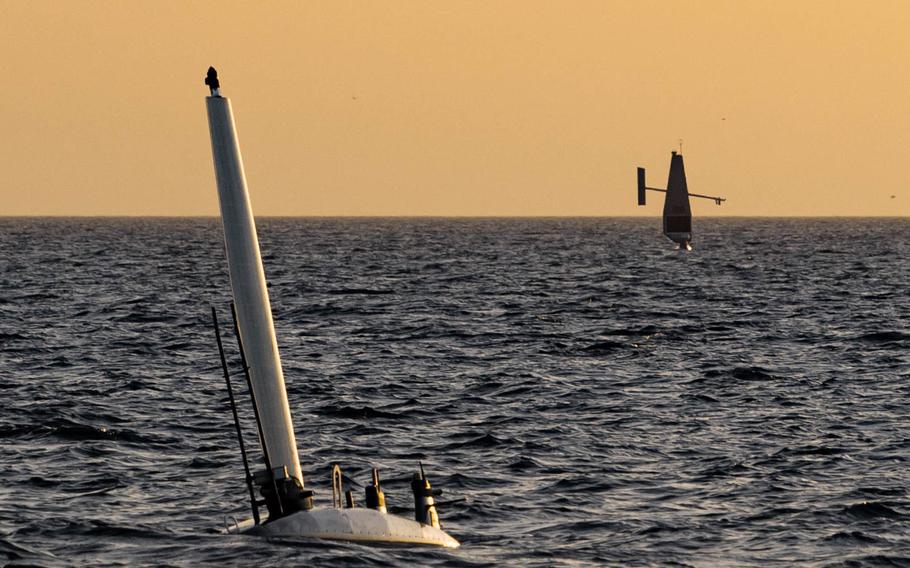
An Ocean Aero Triton unmanned surface vessel (left) operates in the Arabian Gulf with a Saildrone Explorer USV during a bilateral exercise between the U.S. Navy and United Arab Emirates navy, Feb. 16, 2023. (Jay Faylo/U.S. Navy)
A United Arab Emirates drone boat’s participation in drills earlier this month with four U.S. counterparts from an experimental task force is the latest step toward the Navy’s goal of having a 100-vessel robotic fleet in the Middle East.
The five unmanned surface vessels surveilled ships sailing through the Persian Gulf as part of a weeklong exercise in mid-February, Task Force 59’s first bilateral exercise with the kingdom, a U.S. 5th Fleet statement Monday said.
The Navy aims to have an unmanned surface fleet of 100 in the waters of the Middle East by the end of the summer, with 80 of the vessels belonging to regional allies such as the UAE, Navy officials have said.
Previous unmanned systems exercises in the Middle East included one in September between the U.S. and Israel in the Gulf of Aqaba.
The 5th Fleet seeks to benefit from the unmanned vessels by having them patrol the Middle East’s waterways, through which much of the world’s trade transits.
Unmanned systems can operate for long stretches on their own as they gather information on passing ships. The Navy created Task Force 59 in 2021 to focus on testing drones and artificial intelligence.
In 2022, Task Force 59 operated unmanned surface ships in the Middle East for more than 25,000 hours, a Naval Forces Central Command statement in December 2022 said.
Iran seized drones from Task Force 59 on separate occasions in August and September of that year and then released them when U.S. warships neared, the Navy said.
Iran and the U.S. have traded claims that the other is destabilizing the Middle East, which analysts say is locked in a shadow war between Tehran’s partners and Washington’s.
The Navy in recent months has seized thousands of rifles and rockets at sea that it says Iran was sending to militant proxies.